The traumatic and violent separation between India and Pakistan is still being exploited politically after 75 years. ‘But at some point, as a nation, you have to be able to look critically at your own past.’
by
August 13th, 2022
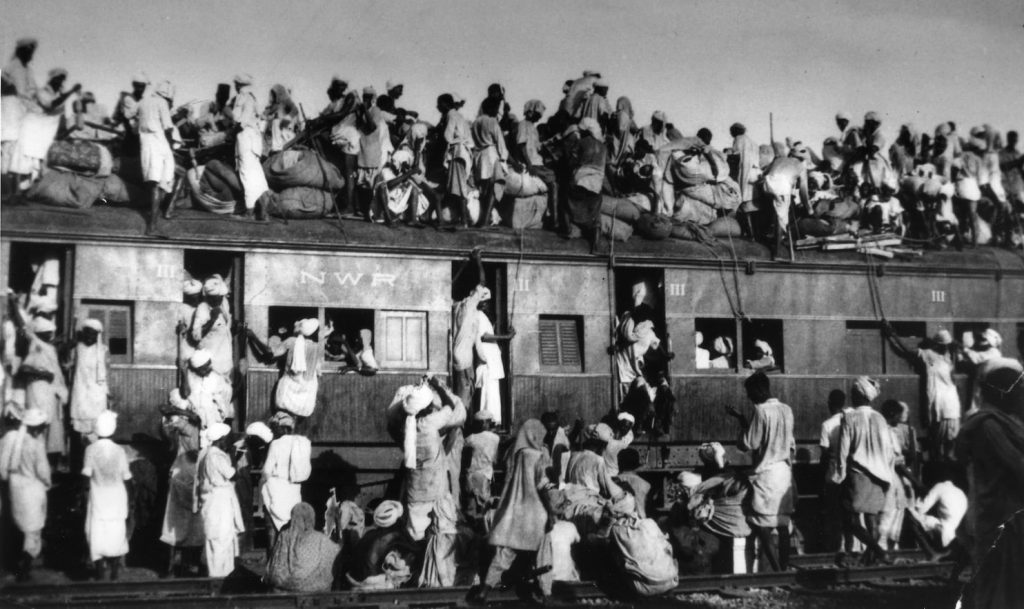
In this September 1947 photo, Muslim refugees clamber aboard an overcrowded train near New Delhi in an attempt to flee India. (Associated Press)
When Nasir Dhillon (38) started listening to his grandfather’s stories in his early thirties, he noticed something special: the love with which he spoke about his Hindu childhood friend, who left for India in 1947, never to return.
It motivated Dhillon to travel with his camera through the Pakistani province of Punjab to interview as many elderly people as possible about their lives before the Partition, the division of India and Pakistan. “I wanted to find reality and record these stories before it’s too late,” he says over the phone from the Pakistani city of Lahore, barely 10 kilometers from the border with India.
Monday marks 75 years since the British left the ‘jewel in the crown’ of their colonial empire. But independence came with a dark side: the split of India and Pakistan. This triggered the largest, most violent population displacement ever. At least 15 million people crossed the border. It is estimated that between 200,000 and 4 million people were killed in the chaos and mutual killings. And the animosity between the two countries still stands in the way of processing this.
estranged twins
In 2016, Dhillon’s quest became a YouTube channel, Punjabi Lehar, with videos from hundreds of people. “Almost all of them tell us that until 1947 they lived in harmony with the people who are now Indian, and then their neighbors of all religions. So why is there so much animosity now?”
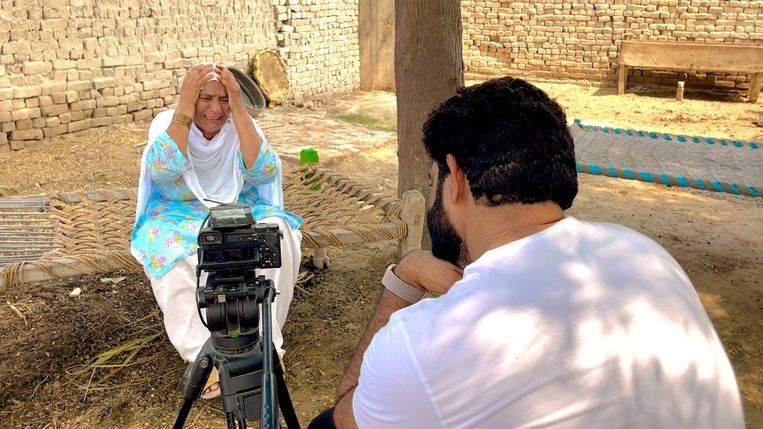
Nasir Dhillon at work for his YouTube channel. Statue Aletta André
It is a great contrast between India and Pakistan, a kind of estranged twins. The human connections that still exist extend across two different political realities. And this is also why there is so little talk about the partition, the partition, and about the violence that accompanied it, and all the consequences for the most diverse population groups.
“Neither country wants to commemorate this,” says Urvashi Butalia, author of the unique book The Other Side of Silence. For this, she interviewed survivors who speak openly about the violence they inflicted on others in the chaotic period after 1947. For example, she spoke to a Sikh man who beheaded 26 women of his own family before fleeing from Pakistan to India. Rather than falling into the hands of the murderous, raping Muslims, they feared.

Stories like this never made it into the official history books or commemorations. Last year, Indian Prime Minister Narendra Modi announced that August 14 – Pakistan Independence Day – would now be Partition Horrors Remembrance Day in India. But here he spoke only of the Indian victims of the violence. That while there was no clear dividing line between perpetrators and victims. Ordinary people from all communities joined in, incited by politicians and the divide-and-rule techniques of the British. “Both countries must acknowledge that they have been complicit,” Butalia said. “Ordinary people recognize this. But at the state level, this has never happened.”
In itself, this made sense in the early years. Independent countries had to be built from the colonial ruins. In Pakistan, the narrative of the birth of a new nation, and in India the pride of defeating the British predominated. The traumas of the bloody trains, the millions of missing people, the fear, the unclear boundary across family ties, and the permanent loss of ancestors’ land were pushed into the background.
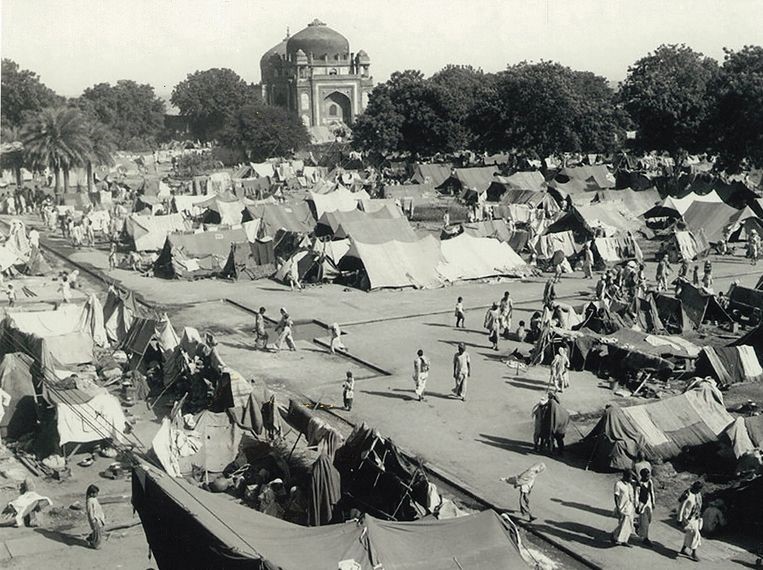
This photo, taken circa 1947/1948, shows an Indian Muslim displaced camp next to Humayun’s Tomb in New Delhi, during the period of unrest following the split of India and Pakistan. Image ANP / AFP
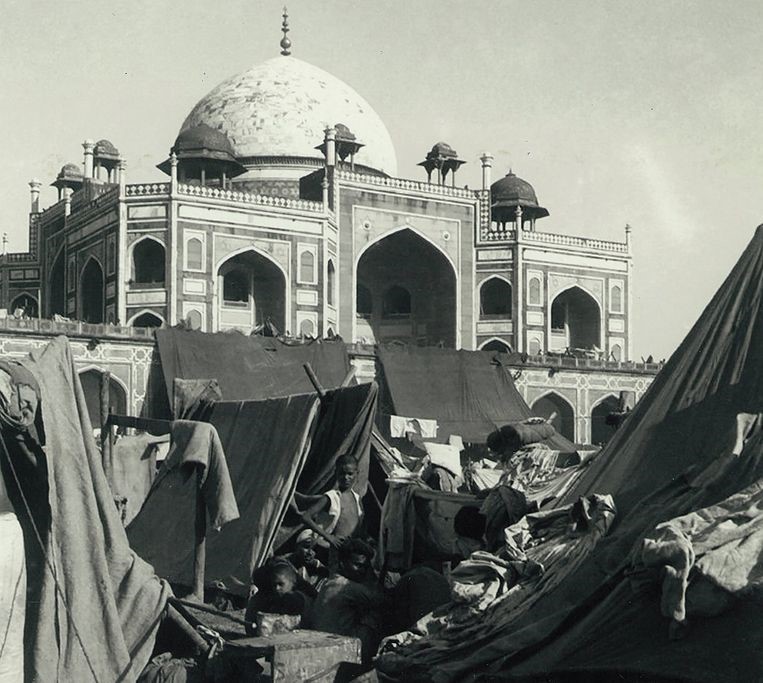
Image ANP / AFP
‘Remember the good times, not the violence
For many survivors, that’s okay. Trilochan Singh, almost 95 years old, prefers to talk about the years leading up to the split. As a teenager in the now Pakistani city of Peshawar, he was active in the independence struggle. He organized school strikes, gave speeches in public parks, and was arrested before he graduated from high school. “Do you know Mir Taj Mohammad Khan?” he asks, surrounded by his wife, daughter, and granddaughter in the Indian capital New Delhi, where he settled in 1947. “That was Shah Rukh Khan’s father! One of India’s most famous movie stars. He too was from Peshawar. We often gave speeches together.”
He calls the independence struggle that ended in the loss of his home city ‘terrible’. The violence was frightening, he says. But whether it is important that this is not forgotten by the next generations? “Most people don’t know,” he simply says. His wife Diljeet Sabharwal (85) adds: “The beautiful memories from before the Partition must be remembered. Not the violence.”
In her research, Butalia also encountered many people who did not want to talk about the violence. “It can be traumatic. And ordinary people do not have the words to describe such atrocities. We must not force them. But there is enough evidence to admit that it happened.”
For those who did want to talk about it, it could be an important first step in processing. “Although they had experienced it, no one, not even in their own family, had asked about it before. They had sometimes tried to tell stories, but no one really listened. Especially when it comes to violence perpetrated by one’s own family, it can be very painful to accept.”
Suhasini Singh grew up with the stories of her grandfather, 95-year-old independence fighter Trilochan Singh. “Peshawar and the struggle for independence come up in pretty much every conversation we have,” she says. “I feel so blessed to have been able to hear this history first hand.” There was less talk about the Partition itself.
Social media as a means
The most obvious consequence for her, grandchild of the generation that experienced the traumatic split, is the icy relationship between India and Pakistan now. “It’s sad that we can’t just go to Pakistan when we were once the same country. Most people have hostile feelings when they think of Pakistan. That has to change. Thank goodness we have social media. That’s a strong tool we can use to deal with the animosity.”
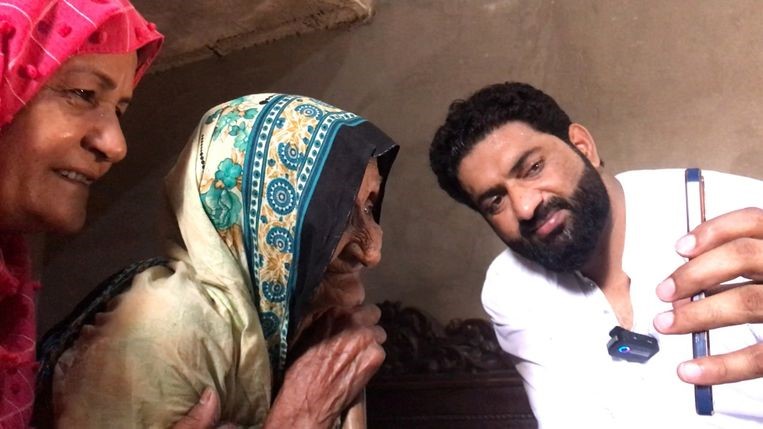
Nasir Dhillon. Statue Aletta André
Punjabi Lehar, Dhillon’s YouTube channel, is a strong example of social media connection. In fact, the channel’s growing reach allowed Dhillon to reunite some 200 people who told their stories with childhood friends and relatives they lost track of in 1947. A number of them were able to meet, for example at a special pilgrimage site for Sikhs on the border that can be visited by people from both India and Pakistan with a day pass. Dhillon also helped people visit their native village. “That is possible for people who come from abroad,” he says.
By that he means: not India. Because despite the many personal connections, it is becoming increasingly difficult for people from India to obtain a visa for Pakistan, and vice versa.
Butalia remembers how in the 1980s it was still a kind of festival around the Pakistani embassy in New Delhi. “People slept in long lines for visas, chatted about their families there, and there were stalls for snacks and help filling out forms.”
‘Crying at the visa office’
She experienced five years ago how difficult it has become for an Indian to get a visa for Pakistan. “A very good friend in Lahore was dying. She had cancer and wanted to see me again. I cried at the visa office. But my visa was rejected.”
Especially since India withdrew the special autonomy of the Kashmir border region in 2019, relations have fallen to an all-time low. There is not even a direct flight between the capitals Delhi and Islamabad anymore.
Commemorating the atrocities from only a victim’s perspective, as now proposed by Modi, could intensify the hostile feelings towards Pakistan, Butalia thinks. “Moreover, commemorating Partition should not only be about the atrocities. It was so much more than that. For example, we never hear about the nomads in the border region, who were forced to settle. Or the indigenous tribes in the Northeast who lost their weekly market to sell products because of the border. We need to commemorate in a more diverse way.”
Oral history projects, such as Punjabi Lehar, help with this. The digital 1947 Partition Archive, where numerous interviews are linked to a floor plan, is another example. And Project Dastaan, in which young people from both countries help survivors visit their birthplace with virtual reality glasses. As with Punjabi Lehar, children and grandchildren of people who experienced the Partition are behind these projects.
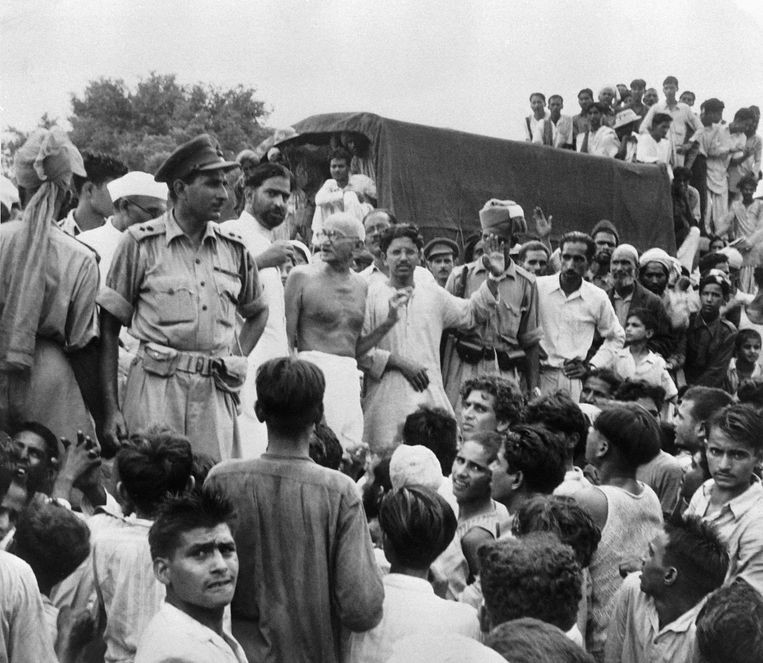
The photo, taken on September 22, 1947, shows Mahatma Gandhi (center). He visits the camp of Muslim refugees at Purana Qila in New Delhi as they prepare to leave for Pakistan. Image ANP / AFP
The Loss of the Sindh
Saaz Aggarwal is also such a child. Her mother grew up in Sindh, now a Pakistani province. Unlike Punjab and Bengal, provinces that were divided between the two countries, Sindh went entirely to Pakistan. Until 1947, the population of the capital Karachi was largely Hindu. About a million Sindhi Hindus and Sikhs left for India. Unlike Punjabis and Bengalis, they could no longer speak their own language on the other side of the border. “They fought for freedom but lost their own land,” says Aggarwal.
She previously wrote the book Sindh: Stories from a Vanished Homeland, for which she interviewed about three hundred Sindhis who left the province after 1947. The Partition was not as violent in Sindh as elsewhere, Aggarwal said. “For them, the trauma is in the pain of displacement. With the loss of Sindh, they have also lost their language, their culture, and their history.”
Aggarwal has therefore started an online petition against Modi’s Partition Horrors Remembrance Day. “They don’t want to commemorate the atrocities. They want to remember their life as it was before Partition. And they want it to be recognized that political divisions caused their trauma – not the other community.”
Butalia welcomes all oral history projects. “The fact that young people are keeping the subject alive means that friendship between the countries may still be possible.”
She does, however, insist that the violent aspect of the split, and one’s own role in it, should not be forgotten either. “Memories of peaceful coexistence before the Partition are much stronger. But at some point, as a nation, you have to be able to look critically at your own past and ask yourself what you can learn from it. We must remember that we ourselves are capable of violence, but also of peace and compassion.”
The theory behind two nations
In the 1920s and 1930s, India’s independence movement under the leadership of Mahatma Gandhi grew. At the same time, the idea of the two-nation theory grew among Indian Muslims, the theory that stated that Hindus and Muslims were different nations that could not live together in one country. Especially not because Muslims were a minority, with about 24 percent of the population in undivided India.
In 1940, Mohammad Ali Jinnah, the leader of the Muslim League and later Pakistan’s first governor-general, proposed making a separate country from the Muslim-majority areas.
In the years that followed, negotiations on alternatives, such as that of a federal state, failed. Violence broke out between religious groups, killing thousands.
The British, now in a hurry to withdraw from India, announced in June 1947 that India would be divided into India and Pakistan and that August 15 would be the day of independence.
British civil servant Cyril Radcliffe, who knew nothing about India or cartography, had to cross the border in less than two months. That was difficult because the Muslim population lived spread over the country. He, therefore, split Punjab and Bengal in two and decided that Pakistan would have a part west and a part east of India.
When Pakistan celebrated independence on August 14 and India on August 15, no one knew exactly where the borders were.
Princely states were given the choice of which country they wished to join. Some wanted to remain independent or were in doubt, such as Jammu & Kashmir. Less than two months after their independence, India and Pakistan fought their first war over this region, which is still central to their enmity.
Read also
Are India and Pakistan Going to Battle for Kashmir Again?
Tensions between India and Pakistan in the disputed border region of Kashmir rose further on Wednesday. The two countries shelled each other with artillery, and at least some civilians on the Pakistani side were said to have been killed.
Aromatic grain of rice sparks a fierce battle between India and Pakistan
A new conflict between India and Pakistan is in the making. It is not the status of Kashmir that is behind the tensions this time, but the so-called ‘Protected Geographical Indication’ of an aromatic grain of rice.